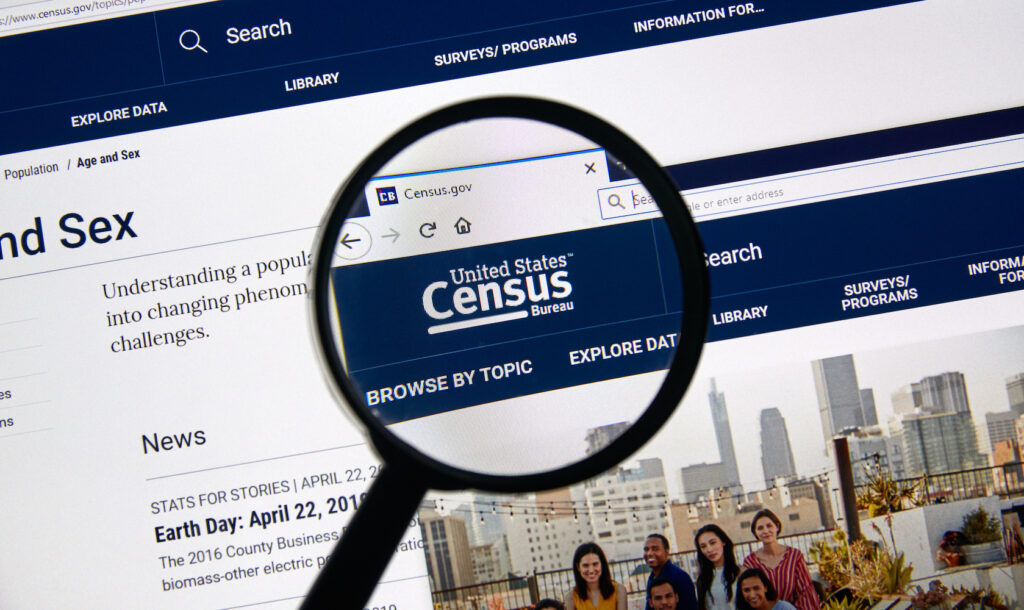U.S. foreign-born population reaches highest rate in over 100 years
The percentage of foreign-born American residents has grown to its highest number in over a century, according to the latest numbers from the U.S. Census Bureau.
The number of U.S. residents born…

The percentage of foreign-born American residents has grown to its highest number in over a century, according to the latest numbers from the U.S. Census Bureau.
The number of U.S. residents born elsewhere increased to 14.3% in 2023, up from 13.9% the previous year, the Census Bureau’s annual American Community Survey found. The annual survey tracks data such as income, employment, education levels, internet access, family life and other topics.
Over the past decade migration from foreign nations has been the driving force behind U.S. population growth, as U.S. birth rates have dropped. The Associated Press reports the current foreign-born population in America is nearly as high as the 14.7% rate of 1910, when massive numbers of foreign-born individuals and families made their way to America in search of a better life.
In 2023 migration from abroad made up more than two-thirds of population increase in the U.S., and nearly three-quarters of the increase over the past decade.
Growth was led by immigrants from Latin American countries, with the regions of Mexico and Central and South America seeing a 51.2% increase, compared to 50.3% a year earlier, according to Census Bureau estimates.
“Latin America was the only world region of origin to experience an increase among those U.S. residents born in another country, as the share of foreign-born residents from Europe and Asia dropped slightly,” reports the AP.
As in the past, a better way of life appears to be a major motivating factor for a majority of the migration to the U.S.
“We knew that here you can have savings and live well,” Luciana Bracho, a legal immigrant from Venezuela to Miami, told the AP. “Here you can have normal services such as water and electricity. I like Miami and the opportunities that I have had.”
Similarly, Nicole Díaz, a Venezuelan who lived in Peru and Ecuador before moving to Miami, told the AP that she was “100% happy” living in South Florida.
“After being in different countries, working here is relaxed, despite the language,” Díaz said, adding, however, that “housing is very expensive, and we have been evaluating moving to another state because here all the salary goes for the rent.”
Newsweek noted from the survey that a number of states experienced major spikes in year-by-year foreign-born populations, with Delaware increasing from 9.9% to 11.2% in foreign-born residents; Georgia increasing from 10.7% to 11.6%; and New Mexico going from 9.3% to 10.2%.
By contrast, Washington, D.C., Idaho, Iowa, Maine, Minnesota, Montana, North Dakota, and Oregon all saw slight decreases in foreign-born populations.
The Census Bureau survey also found U.S. residents identifying as Hispanic grew to 19.4% in 2023 as compared to 19.1% in 2022. By contrast, the number of non-Hispanic white residents shrunk from 57.7% to 57.1%, while the number of black residents remained at 12.1% and Asian resident numbers increased slightly to around 6%.
The New York Sun notes Census Bureau statistics don’t distinguish between foreign-born residents who are in America legally or illegally.
“Illegal immigration has become a top issue in the 2024 presidential race, even as illegal border crossings from Mexico plunged this summer after reaching a record last December,” the Sun writes.
In related news, the Census Bureau survey found the U.S. population continues to trend older, with the median age increasing to a little over 39 years old last year.
The survey also found the numbers of U.S. residents that are senior citizens increased to 17.7% in 2023, up from 17.3% in 2022, while the proportion of the population under 18 years old remained at 21.7%.
The survey also showed that in 2023, for the first time in a decade, the cost of renting a dwelling, with the addition of utilities and other expenses, grew more rapidly than home values across the nation. Rental costs rose by an average of 3.8%, the largest increase since 2011.
However, the percentage of income a renter used on housing costs and utilities remained at 31%, consistent with the previous year, indicating that renter incomes kept up with rent and utilities price increases.



